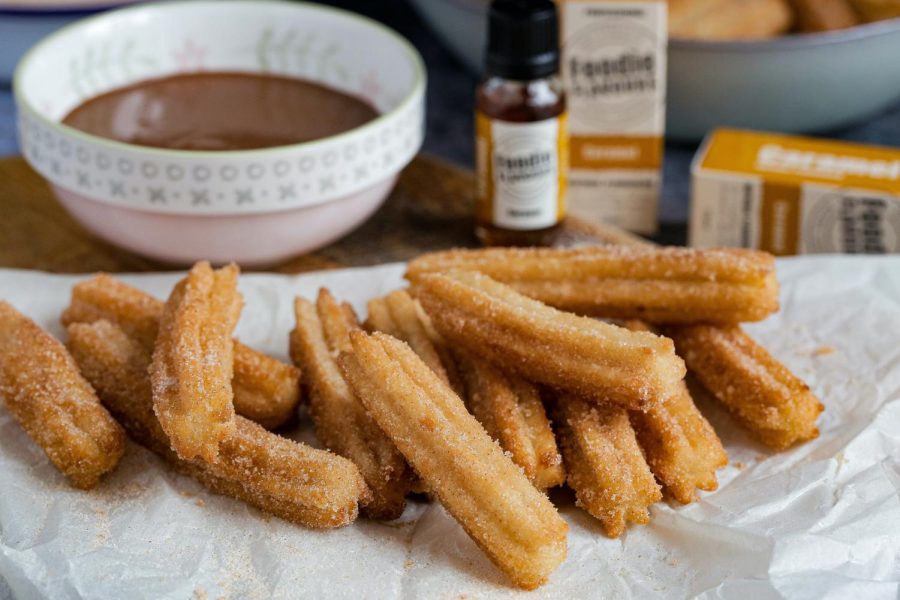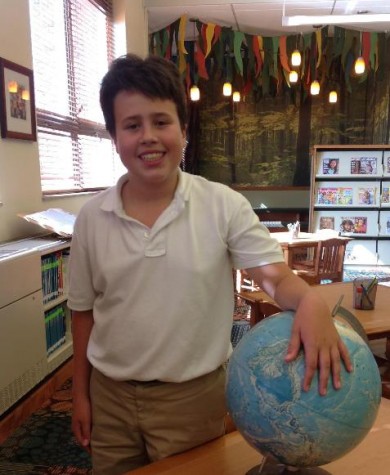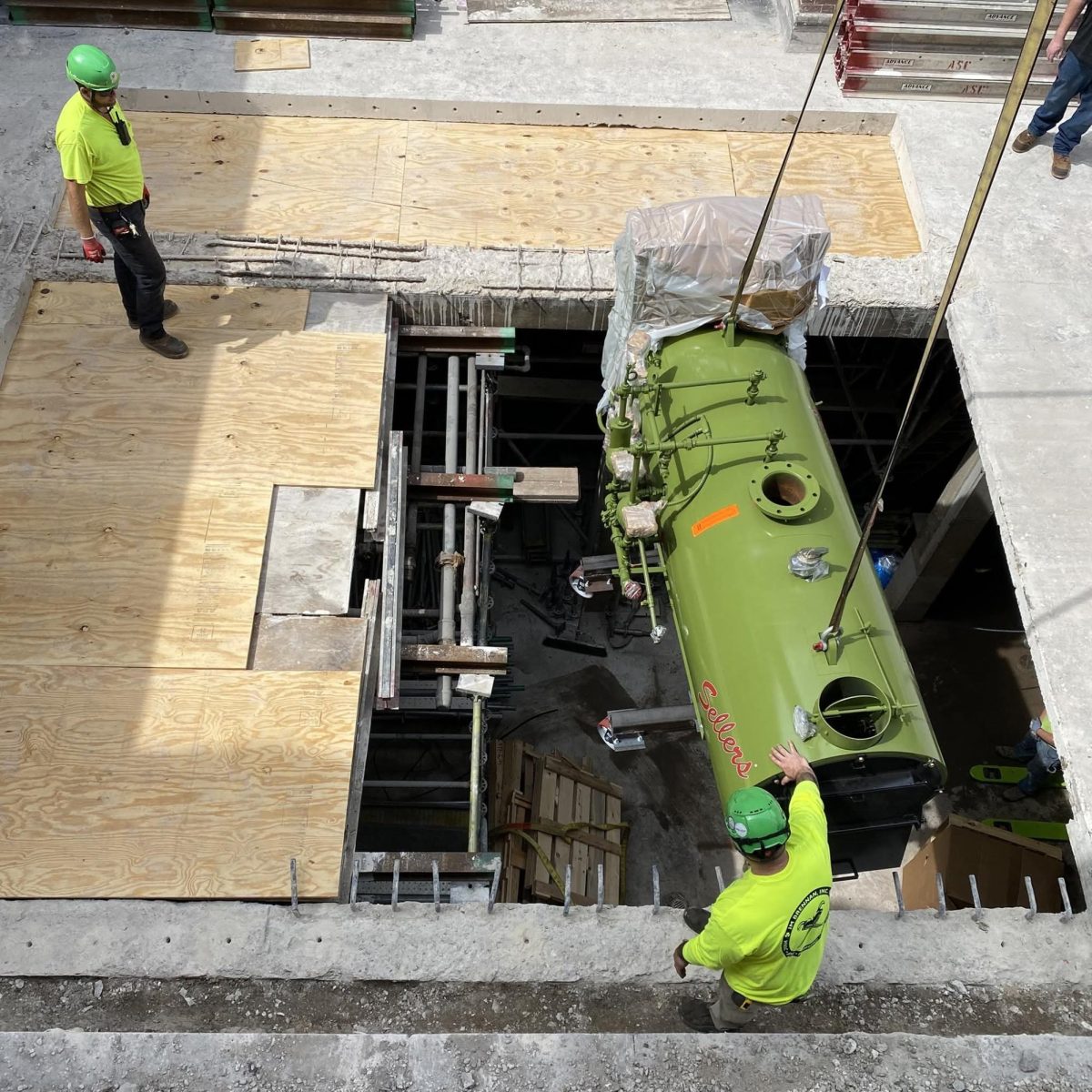Churros for Healing
December 10, 2015
Every year St. Robert Parish has a churro sale. St. Robert has been raising money for a new clinic down south in Mexico through the sale of these Hispanic treats. The school’s fundraising has benefitted Tenejapa, a town in the province of Chiapas by helping to raise out of poverty, allowing people there to build an influential medical clinic integrated into the community.
The medical clinic that has been built is one of the first of it’s kind in the area. Hopefully, the new resource will aid the community by giving much needed medical help. The clinic is one of the biggest buildings in Tenejapa, a full two levels high. When the clinic opened, people in Tenejapa held a large ceremony attended by almost everyone in the town. The doors were adorned with ribbons to be cut by those responsible for making the clinic a reality. Those involved cut the ribbon together with a big pair of scissors. This group includes, but is not limited to, carpenters, builders, contractors, priests and deacons. Most of the builders at the project site were simply normal citizens that pitched in to better their own town.
St. Robert hosts a churro sale to benefit the clinic each year. The event is similar to a bake sale, focusing on regionally appropriate cuisine in lieu of brownies and cookies.. The sale is usually run by students in the Spanish language classes and organized by Sra. Demet. Churros are sold during the school lunch periods.
St. Robert was introduced to idea of helping the community in Chiapas from another local parish, Sts. Peter and Paul. Sts. Peter and Paul are the partner parish to the Catholic church in Tenejapa. While both St. Robert and Sts. Peter and Paul donated to the dream of the clinic, the bulk of the funds came from elsewhere. Many of the coffee makers in Tenejapa donated to the cause of the clinic as well, but most of the funds were provided by an Italian church.
Tenejapa is a community that lacks the overindulgence of material goods found in countries like America..; Few own cars and even if one does acquire a vehicle, the roads leave much to desire. Most citizens use the taxi system if they need to reach somewhere too far to travel by foot. Also, people in Tenejapa aren’t accustomed to the many cooking appliances that we have. In fact, “In some villages they do most of the cooking over an open fire…not on gas or electric stoves,” stated Deacon Nosacek. Deacon Nosacek belongs to one of the parishes in America who has been supporting the the clinic.
Tenejapa has a flare and beauty all of its own. People there create beautiful textiles, and one of their main exports is rich coffee. Tenejapa was originally a Mayan village, and they speak the language Tzeltal. This language a descendant of the Mayan languages just like the people themselves. The village has much preserved the culture of their ancestors due to their rich traditions and seclusion amid a mountain range. Another aspect of the vibrant culture can be seen through the village’s hats. Each and every community in Chiapas has their own unique and special hats, members of various communities can be easily identified by these decorative hats. Though this community is not the wealthiest, it is filled with vibrant culture, spirit, and rich traditions. Now, with the addition of a medical clinic, the citizens can flourish and grow, knowing that their basic needs will be supported.
Reference
Schafer, Norma. “On the Road to Tenejapa, Chiapas, Mexico.” Oaxaca Cultural Navigator Norma Schafer. Oaxaca Cultural Navigator LLC, 27 Feb. 2015. Web. 19 Nov. 2015. <http://oaxacaculture.com/2013/02/on-the-road-to-tenejapa-chiapas-mexico/>.








Nick • Oct 18, 2016 at 2:12 pm
sorry typo good article
Ben • Jun 7, 2016 at 10:55 am
this is legitness
Daniel Ochalek • Dec 18, 2015 at 5:24 am
Sounds like a beautiful town and nice people. It must feel good to take part in such an important project, even in a small way. Nice work Reed.
Ms. Dahl • Dec 15, 2015 at 7:25 am
I knew we had a Churros sale every year (and trust me, every year I am excited); however, I never knew what exactly it was for. Thanks for enlightening me! Great topic to choose… Any idea how the clinic is doing now?
Sra Demet • Dec 17, 2015 at 8:59 pm
Reed,
This is an awesome article. Thank you so much for showcasing our project. We have been helping out for over 5 years now. We are having the sale this year on January 6, 2016! Tell everyone to bring their money!
Thanks again,
Sra Demet
Jack • Dec 14, 2015 at 2:41 pm
I think that it is great to help the people in Tenejapa, and churros are a great and delicious way to do it.?
Elijah • Dec 14, 2015 at 2:40 pm
What is the clinic’s current condition?
Cal • Dec 14, 2015 at 2:36 pm
Interesting information, the idea of helping people who enjoy making cool hats and coffee that are less fortunate than us is a great idea.
Natan • Dec 14, 2015 at 2:33 pm
I always wondered why there was a churro sale, but now I know that they are sold for the greater good of a town.
Reed • Dec 14, 2015 at 2:32 pm
Very good, sounds hard to be in the ballet
David :) • Dec 14, 2015 at 2:28 pm
I really like the idea of selling delicious churros to raise money for people who enjoy making cool hats and coffee.
Deacon Gary Nosacek • Dec 21, 2015 at 6:24 pm
Reed,
I’m glad you like the hats. They gave me one during my last visit. They
are very heavy and not very comfortable, but it was a special honor to be
given one, so I wore it the whole time that I was there.
Madeline • Dec 14, 2015 at 9:27 am
I’ll be buying a churro!
Lily Dunnn • Dec 14, 2015 at 9:25 am
Intresting information. Churros are very good????
Joe Madell • Dec 14, 2015 at 8:40 am
This is a great acticle, I like the idea of helping the people less fortunate than us.